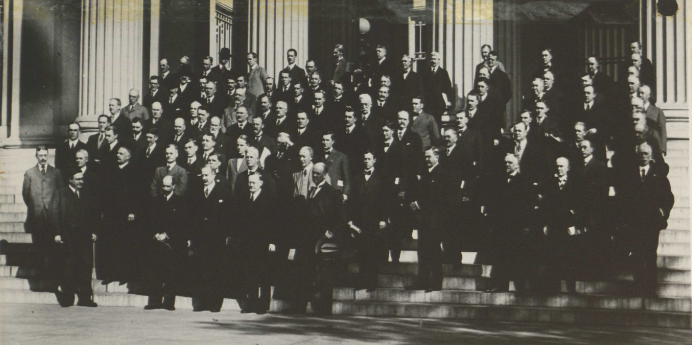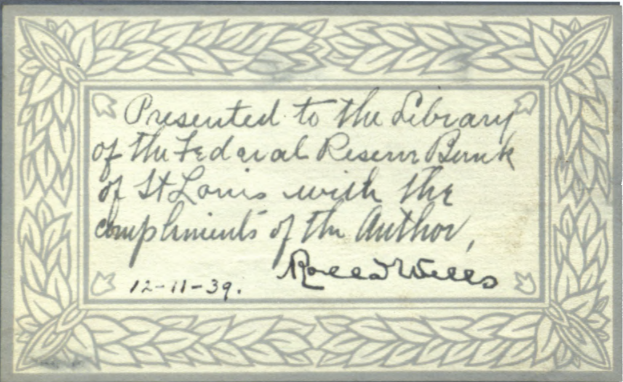On April 2, the Federal Reserve Bank of St. Louis welcomed a new president, Alberto G. Musalem. Join us in commemoration of this event and find out more about the 110-year history of the leadership of the St. Louis Fed and the people who have served in that role.
History
In the original text of the Federal Reserve Act of December 23, 1913, there were no presidents of the Federal Reserve Banks. Section 4 of the Act, laying out the powers of Federal Reserve Banks, simply said that each Bank had the power “to appoint by its board of directors, such officers and employees as are not otherwise provided for in this Act.” After the twelve Federal Reserve Districts were selected by the Reserve Bank Organization Committee and the first Federal Reserve Board took office, the new Board began to write rules for how the new Federal Reserve Banks would operate. By October 1914, the Board agreed that the first step for each Federal Reserve Bank’s board of directors would be to name a Bank governor “who shall be the active manager of the bank.” The first governors elected, on October 5, were Benjamin Strong of New York and George Seay of Richmond. The remaining ten governors were elected over the subsequent few weeks leading up to the opening of the Banks in November 1914. (See FRASER timelines of all Bank presidents here.)
In 1914, just before the Banks first opened, the “officers and directors” of all 12 Banks met in Washington—a group that included both the first governors and the members of the Boards of Directors.[1]

The Banking Act of 1935 reorganized the Federal Reserve System, amending the Federal Reserve Act to clarify and centralize many powers of the Fed and creating the position of Bank president. On March 1, 1936, the Act went into effect and the newly appointed presidents took office, meeting with the new Board of Governors as the modern FOMC for the first time later that month.
Presidents of the Federal Reserve Bank of St. Louis
Rolla Wells was the first president (then called governor) of the St. Louis Fed. FRASER has the history on all those who have served in the position, from Wells to our current president, Alberto G. Musalem. The timeline shows their years of service and links to historically significant materials related to each president. Browse speeches of William McChesney Martin, Sr., who served as St. Louis Fed Board chairman (1914-1929) and president (1929-1941) or peruse the many speeches of his son, William McChesney Martin, Jr., the longest-serving Fed chairman, who coined the “punch bowl metaphor” in his October 19, 1955 speech. Flip through the pages of Episodes of My Life, in which Rolla Wells recounts his earliest memories, stories of a growing and developing metropolis, and his career as mayor of St. Louis and then president of the Bank. Listen to audio interviews with former presidents Darryl Francis, Lawrence K. Roos, and James B. Bullard and find out how the Federal Reserve grew and changed during their tenures.

Since 1936, the role of president has evolved and expanded as the role of the Federal Reserve has changed with the economy. Learn more with a deep dive into the wealth of our ever-expanding collections of speeches, timelines, and more on the presidency of all twelve Federal Reserve Banks. You can also browse the scores of biographies of Fed officials on FederalReserveHistory.org.
[1] In some cases, a Bank’s governor also served on the Board of Directors, which is no longer permitted.
© 2024, Federal Reserve Bank of St. Louis. The views expressed are those of the author(s) and do not necessarily reflect official positions of the Federal Reserve Bank of St. Louis or the Federal Reserve System.


 @FedFRASER
@FedFRASER